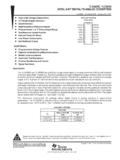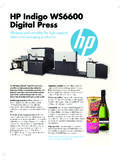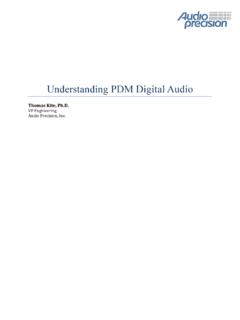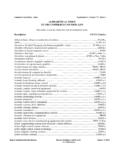Transcription of SFC Start-up inverter of gas turbo-sets
1 SFC Start-up inverter of gas turbo - sets Integrated compact units Brochure 2 inverter as a means for Start-up of gas turbo - sets 1 Start-up of 4 gas turbines via 2 static frequency converters with change-over facility 2 Gas turbine manufacture Cover photo: Jurong gas turbine power plant, Singapore, generator units 1 and 2, erected by Siemens/KWU using AEG compact units. Generator power: base load MW, peak load MW The demand of public utility companies for dependable and readily available sources of energy for peak-load coverage is reflected by the use of gas turbine groups and pump-storage power stations. Moreover, increasing numbers of gas turbine power stations use gas and steam combination processes as a means to boost efficiency.
2 As gas turbines cannot start without external means, a Start-up device is necessary driving the main generator via a static frequency converter while the main generator is working as a motor. The approach of starting via static frequency converters is increasingly gaining ground because it offers a number of important advantages: High degree of availability Very good black start capability because the inverter power can be continuously adapted to the black start diesel genera-tor, and because the power can be slowly increased from zero with practically any rate of rise, whereas other systems (e. g. electric motors) mean immediate applicationan of power. Almost maintenance-free operation (no parts subject to wear and tear) Space-saving design Free selection of the place of installation.
3 This approach is particularly favourable and economical if several gas- turbo groups exist which then require only a single Start-up device. Despite the high degree of availability, however, a minimum number of inverters should always be available for reasons of redundancy and Start-up times (an inverter can start up only one gas- turbo Set at the same time). One inverter for two gas turbines wswitch-over facilities to another inverter has turned out to be the optimal solution (see Fith ig. 1). For many years, static frequency con-verters developed and supplied by AEG have met these requirements in many gas turbine power stations with a high degree of reliability. The rapidprogress in the field of components (C-MOS techniques, microprocessors, etc.) has led to a considerable reduction in volume and costs of the necessary equipment and permitted the elimination of the rotor position transducer which was formerly attached to the generator-developments which have further increased the availability of these static frequency converters and thus of the gas-turbine units.
4 Rotor position transducers in a strongly simplified form (via three proximity initiators) are today only necessary if the following operation requirements must be fulfilled: High torque with the turbo -set idling (e. g. for plant without oil-lift bearings) or if turning Operation is required for the static frequency converter 1 2 3 The speed controlled Synchronous machine 3 Vector diagram of stator and rotor field of the speed controlled synchronous machine 3 The principles of Operation of a static frequency converter can be explained via the working principles of a converter -fed synchronous machine. Fig. 3 shows the power part. The inverter normally consists of two three-phase bridge circuits whose AC voltage inputs and outputs are connected to the mains and to the synchronous machine to be fed.
5 Their DC connections are interconnected via a DC link circuit. In this illustration, the thyristors are identified in the order of their firing by numbers on the mains side and by letters on the machine side. After firing of the thyristors 1 and 2 in the mains converter and the thyristors a and b in the machine converter , a current flows from the mains phase U via 1, the link circuit reactor, via a, through the motor phases U1 and W1 via b and 2 back into the mains phase W. A magnetic field 1 is thus generated in the motor. lf an excitation current flows at the same time, a magnetic field F generated in the rotor, too. The position of the field is determined by the actual position of the axis of the excitation winding of the rotor. The two fields generate a torque whose amount is described by the following relationship: M ~ 1 X F = 1 F sin : angle between 1 and F The rotor starts turning and would stop at 1 = F.
6 In order to avoid this, the thyristors is again produced (M ~ 2 X F ), and the rotor continues turning. The rotation motion of the rotor is maintained through successively switching over the thyristors. The switching sequence is determined either upon the basis of the measured machine voltage, or by means of a transducer which is firmly attached to the rotor of the machine converter are switched over when the rotor field reaches a certain position which means that the thyristor f fires and the thyristor b blocks. As a consequence, a current now flows through the motor phases U1 and V1. The resulting stator field is shifted to the position of the vector 2 (see vector diagram). A torque 4 Static frequency converter , principles 4 Principle diagram gas turbine with static frequency converter 1 Control, signals 2 Control regulation 3 Supply transformer 4 Mains converter 5 Link choke 6 Machine converter 7 Isolator 8 Voltage detection 9 Synchronous machine 10 Excitation 11 Gas turbine 12 Block transformer The basic circuit diagram (Fig.)
7 4) shows a gas turbine with static frequency con-verter. During inverter -controlled frequency Start-up , the static frequency converter acts on the synchronous generator which is used as drive motor. The mains converter (4) which works as a rectifier with phase angle control supplies a DC voltage and passes on to the DC link circuit the active power drawn from the mains. The machine converter (6) works as an inverter and generates a negative voltage from the terminal voltage of the generator. It withdraws power from the DC link circuit and passes this power on to the machine. The machine voltage rises at a linear rate with the speed until the rated voltage of the inverter (usually - kV) is reached. At higher speeds, the voltage is adjusted at a constant value via the generator excitation.
8 The choke in the DC link circuit has the function of decoupling the mains and machine converters; it takes up their voltage differences and thus has a DC smoothing effect. The firing times for the machine converter thyristors are determined by evaluating the machine voltage, and - if special requirements have to be met (surmounting a high breakaway torque, or turning operation) - by means of a simple detector circuit. The generator terminal voltages are measured and signals for pulse gene-ration formed as a function of the zero crossings. The detector signals required for heavy starting are evaluated only in the lower speed range ( 80 rpm), or over the entire range of turning Operation with inverter where reduced excitation current levels are being used.
9 As soon as a sufficiently high machine voltage is available, normal signal detection procedures via voltage measurements are applied. The current in the machine converter is commutated by the terminal voltage of the synchronous machine. At zero speed or at very low speed, when the synchronous machine is still unable to supply a sufficiently high terminal voltage, commutation of the machine converter is achieved by intervention in the control of the mains converter . The mains converter is temporarily controlled to work as an inverter , the current in the DC link circuit athus in the thyristors of the machine converter becomes zero. Following a rest period of approx. 2 ms, the mains converter is again forced to rectifier Operation and the next thyristors of the machine converter are fired.
10 This process which takes place six times per machine frequency period is repeated until the terminal voltage of the machine is high enough to ensure commutation (up to approx. 6 % of rated speed). nd 4 5 Static frequency converter plus excitation, detailed 6 Power rating 6 Leopoldau peak power plant, Vienna, Austria Erected by Siemens / KWU using AEG Static frequency converters Generator power: base load MW peak load MW 5 The power of the static frequency converter is primarily determined by the required run-up time of the turbo -set from standstill until synchronization at 3000 (or 3600, resp.) min-1. In the case of gas turbine installations, this time is in the order of a few minutes.






